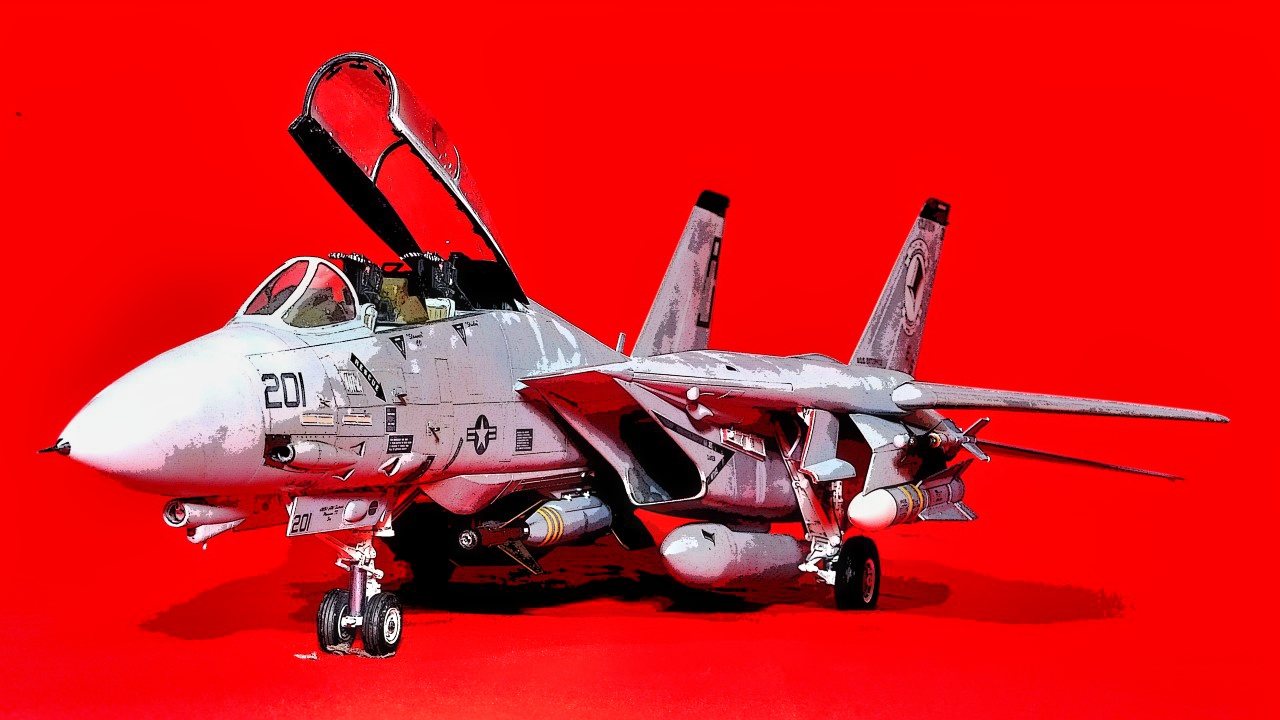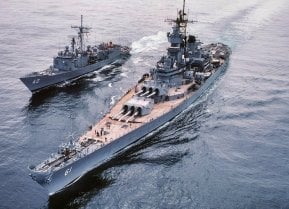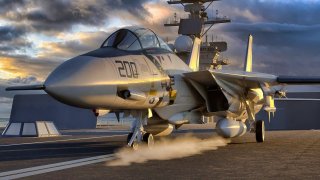F-14 Tomcat: Top Gun Movie Legend and Iran's Best Fighter Jet
Reports indicate that the F-14 was used in combat recently by Iran as a bomber escort for sorties over Syria.
The Top Gun franchise is currently at the center of our popular culture. Top Gun: Maverick (2022) was a smash hit for sure. The sequel's success has reflected attention upon the original – for my money, a gorgeous masterpiece; the top-grossing film of 1986 – which is always a streaming hit anytime.
The male-centric original Top Gun features one of film’s greatest rivalries, between Maverick and Ice Man, as well as what is likely film’s greatest bromance, between Maverick and Goose.
Yet the film’s habitual scene-stealer may not be Tom Cruise, Val Kilmer, or Anthony Edwards – but rather the Grumman F-14 Tomcat, the U.S. Navy’s primary fighter jet during the later days of the Cold War.
F-14 Tomcat: A Formidable Foe of the Russian MiG
The F-14 was designed with the knowledge gained during combat against MiG fighters during the Vietnam War. The first of the “Teen Series” fighters, the F-14 debuted in 1970, and by 1974 was deployed aboard the USS Enterprise, to replace the F-4 Phantom II. In replacing the Phantom, the F-14 became the Navy’s go-to workhorse, capable of conducting a wide spectrum of mission profiles: air superiority; fleet defense; interceptor; aerial reconnaissance; and later, ground attack.
Versatile and durable, the F-14 Tomcat served for over three decades. Yet, the Tomcat often took a backseat to its overlapping successors – the F/A-18 Hornet and the U.S. Air Force counterpart, the F-15 Eagle. Resultantly, the F-14’s operational history is not quite as impressive as its capabilities or service duration would suggest. Through the 1980s, the F-14 earned the vast majority of its combat experience against Iraq, only, not with American operators.
In the 1970s, before the Iranian Revolution and when the Shah still ruled Iran, Iran and the United States were allies. The U.S., hoping to bolster Iran’s military, exported F-14s to the Shah – the sole foreign customer of the warplane. And Iran, which spent most of the 1980s engaged in the Iran-Iraq War, relied heavily on the Tomcat.
According to researcher Tom Cooper, Iranian F-14s scored 50 air-to-air victories during the first six months of the conflict. Besting Iraqi MiG-21s, MiG 23s, and Su-20s; only one F-14 was lost during these first six months, proving that the designers, who had set out to develop a MiG-killer, had indeed succeeded. Iran’s, and the F-14’s, success is particularly notable in that Iranian aircrews lacked proper support from AWACS, AEW, or Ground Control – and also because the Iraqis were receiving support and equipment from three world powers: the Soviet Union, France, and the suddenly-no-longer-allied-with-Iran United States. Estimates suggest that Iran only lost a dozen or so F-14s during the eight-year war (Iraq’s claims to have shot down over 70 Tomcats appear hyperbolic).
One Iranian pilot, Jalil Zandi, exemplifies the success of the Iranian Air Force. He is credited with shooting down 11 Iraqi aircraft. So, oddly, Zandi, rather than some red-blooded American volleyball player, is the F-14’s highest-scoring pilot ever.

Today, Iran is the world’s only operator of the F-14; Iran still operates about two-dozen Tomcats. Reports indicate that the F-14 was used in combat recently, as a bomber escort for sorties over Syria. The U.S. retired the airframe in 2006, replacing it entirely with the successive F/A-18.

The U.S., credibly paranoid about industrial espionage, shredded most of the retired F-14s for fear that Iran would acquire components from the preserved Tomcats. Only 11 intact F-14’s survived the purge, remaining in storage, at Davis-Monthan AFB, in the “Boneyard.”

Fortunately, the F-14 lives on in perpetuity, on film, in Top Gun, where it is preserved in the Library of Congress.
About the Author: Harrison Kass
Harrison Kass is a Senior Defense Editor with over 1,000 published articles. An attorney, pilot, guitarist, and minor pro hockey player, he joined the US Air Force as a Pilot Trainee but was medically discharged. Harrison has degrees from Lake Forest College, the University of Oregon, and New York University. He lives in Oregon and regularly listens to Dokken.
All images are Creative Commons or Shutterstock.


